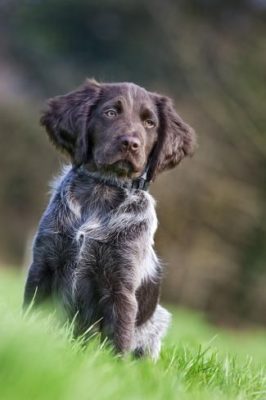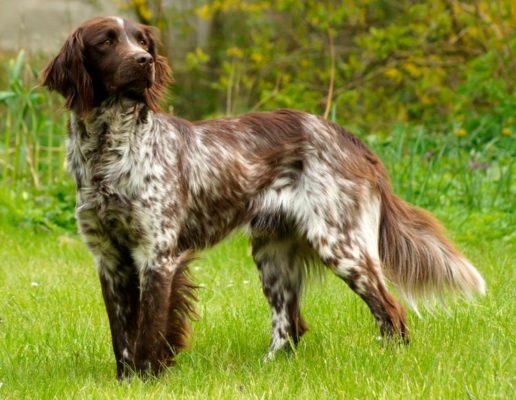Small Münsterländer
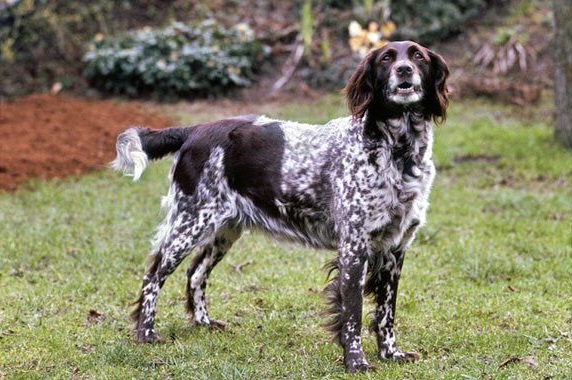
The Small Münsterländer can be rightly considered a versatile dog. It is an energetic four-legged friend for your whole family and a reliable assistant in hunting. It treats strangers calmly and guests at home incredibly friendly. Therefore, not too well suited as a guard dog. He has a high level of intelligence and a balanced temperament.
Table of Contents
Breed Information
| Another Name | Kleiner Münsterländer, Munsterlander (Small), Vorstehhund, Spion, Heidewachtel |
| Origin | Germany |
| Height | Males 54-56 cm Females 52-54 cm |
| Weight | 18-26 kg |
| Fur | Medium |
| Color | Dark brown spots on a white background |
| Lifespan | 12-14 years |
| FCI Classification | Pointing Dogs |
| Group | Hunting dogs |
| Price | From $300 |
Breed Photos
Origin History
The formation of the new Small Münsterländer breed was justified by the great popularity of hunting spaniels and pointers. The official breeding of the Small Münsterländer began in 1870 in the historical region of Germany – Westphalia. Researchers believe that the founders of the breed may have been the Wachtelhund and the Breton Espagnol. Despite the external and working similarities between the Large and Small Münsterländer, the breeds are not the same and are not considered close relatives.
Like other representatives of the continental type, the Small Münsterländer was valued by experienced hunters. First of all, for its high performance, compact appearance, and ability to hunt deftly. In 1912, to further promote the breed, the first Small Munster Association was founded.
The American Kennel Club has only partially recognized the Small Münsterländer. It is registered as a purebred breed but is not yet eligible to register its pedigrees. The breed was officially recognized and standardized by the Fédération Cynologique Internationale in 1955. The Small Münsterländer is most common in its homeland and has also gained popularity among hunters in Denmark, Belgium, and the Czech Republic.
Appearance
The physique of the Small Münsterländer is considered very harmonious. It is a medium-sized dog, square in shape and elegant in appearance. The Kleiner Münsterländer is the smallest representative of the leopard dog. The muzzle is long and straight. Flat, slightly convex skull. Oval dark-colored eyes with penetrating and attentive gaze. The ears are close to the head, high, wide, and floppy. Strong neck, which is slightly broadened. Deep chest.
The length of the body is slightly longer than the height at the withers. Strong limbs with well-developed muscles. A confident and swinging gait. The coat is of medium length, thick and shiny. The whole body is slightly uneven and tends to curl. The permissible color is white-brown. Most often, it is a large brown marking and mottling on a white background.
Character
The Small Münsterländer can be rightly considered a versatile dog. It is an energetic four-legged friend for your whole family and a reliable assistant in hunting. It treats strangers calmly and guests at home incredibly friendly. Therefore, not too well suited as a guard dog. He has a high level of intelligence and a balanced temperament. Not aggressive in his behavior. Hunting instinct can take over only to small animals – here, early socialization is necessary.
It is quite strongly attached to the owner, so you should take care of your time near the Kleiner Münsterländer. If you are ready to provide your pet with long walks, you can safely keep a Small Münsterländer in the apartment. Of course, the hunting dog will feel more comfortable in a spacious house where he can run around to his heart’s content. Without proper attention from the owner, the Small Münsterländer becomes uncontrollable and loses its good disposition.
Care
There is nothing complicated about caring for a Kleiner Münsterländer. Particular attention should be paid to the care of the pet’s ears. Due to their structure, they are extremely susceptible to the accumulation of dirt and moisture. Inspect them daily and clean them with a special solution. In case of any abnormalities or inflammation, see your veterinarian immediately to prevent otitis media development.
It is recommended to comb out the wavy hair of a Small Münsterländer twice a week. It is necessary to bathe your pet only when it is dirty. Claws usually clip themselves. If this is not enough, it is advisable to trim them monthly.
Training
In training, the Small Münsterländer usually shows himself very well. He is active, obedient, and curious. However, do not forget his persistence and stubbornness. It is where you should show your authoritative stance on your pet. Kleiner Münsterländers is completely unresponsive and does not understand aggression and violence – this approach is inappropriate in training. Training should be done gently and patiently. You can diversify the training with games so that the Small Münsterländer feels comfortable and more quickly remembers new commands.
Common Diseases
Owners and researchers of the breed do not note any severe hereditary diseases in the Small Münsterländer. The dog is full of strength and energy and has a robust immune system. There are only a few diseases characteristic of the breed:
- inflammatory processes of the ears (in the advanced state – otitis media);
- dry skin dermatitis.
Nutrition
To avoid health problems, the Kleiner Münsterländer needs a balanced diet with sufficient protein. If you prefer dry food, it should be premium food for medium breeds. It will contain all the necessary components for the normal formation of your pet. Also, be sure to enrich your dog’s diet with vitamins. It is especially true during the molting period and the cold season.
 Otterhound
Otterhound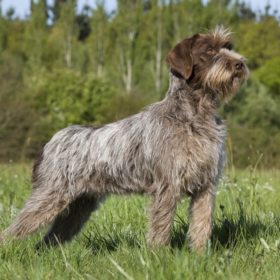 Wirehaired Pointing Griffon
Wirehaired Pointing Griffon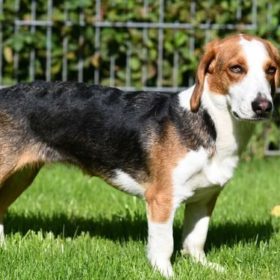 Westphalian Dachsbracke
Westphalian Dachsbracke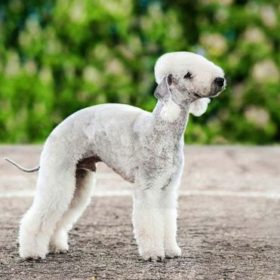 Bedlington Terrier
Bedlington Terrier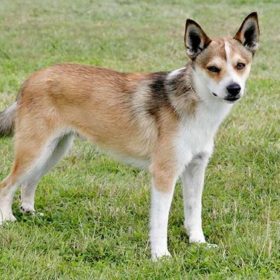 Norwegian Lundehund
Norwegian Lundehund Spanish Water Dog
Spanish Water Dog
